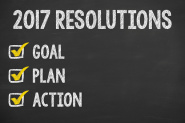Less than a decade ago, one of the world’s largest transport networks was simply an imaginative flicker in the minds of two men trying to hail a taxi on a cold Paris night. After failing to snag a car, the two men came up with an idea of an on-demand taxi service at the touch of a button. What began on a snowy evening in France quickly turned into an app to request luxury sedans in a tiny handful of the world’s most cosmopolitan cities. Soon it spread to include different types of rides, package and even food delivery in nearly any city on earth. That app was Uber.
Uber is now one of the world’s richest start-ups. Along with other innovative digital companies such as Airbnb, Snapchat, Netflix, and even Buzzfeed, Uber has grasped a powerful disruptive strategy that has brought it financial and scalable success in a short amount of time. Disruptive businesses such as these can pick out and then act on trends before they become a trend, building a niche in a market that many people haven’t even discovered yet. Follow these six tips to learn some disruptive strategies that will help to differentiate your business and set it up for future growth.
1) Be technologically savvy
Get to know what is happening in the world of all things digital and tech, even outside of your own industry. Something that can revolutionize your business might come from a spark of something you’ve noticed in a different market or business type.
2) Be a first adopter
Often successful companies are the first ones to take on changes and innovations and to use them to their advantage. Don’t be afraid to step out on your own when trying something new.
3) Rely on sharing
Businesses can no longer rely solely on traditional forms of advertising. Combining your marketing channels to include print, as well as digital sharing and promotion can be the easiest and quickest ways to reach potential customers.
4) Keep up with the competition
Stay aware of what your competitors are doing and be prepared to match their innovations with yours.
5) Interact with customers
Uber and the like are successful for their ability to connect with customers instantly. Listening to your customers helps to gauge demand and enhance the consumer relationship. With the rise of social media, customers are developing increasing expectations for transparency from businesses. Forming a connection with your clients will add to their loyalty and trust of your company. With constant lines of communication open to your customers, you can also respond quicker to real-time changes in the market, safeguarding you from future pitfalls.
6) Track your success
Digital data provides you with the tools and metrics to see how and where your customers are coming to awareness and consideration of your services or products. Understanding and using data effectively can make the difference in building and maintaining new business and answering needs within the market.









